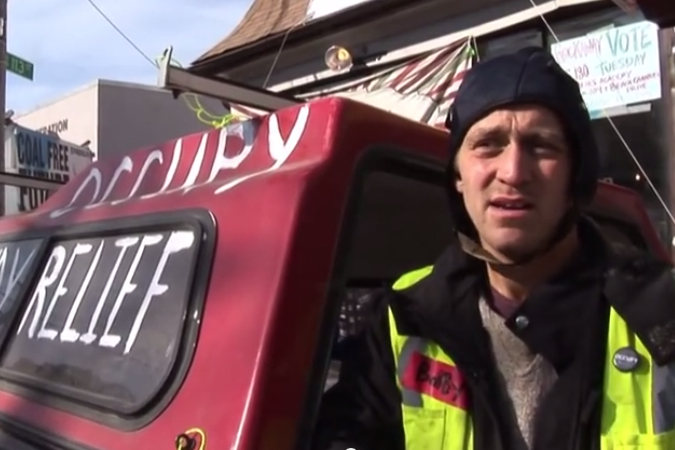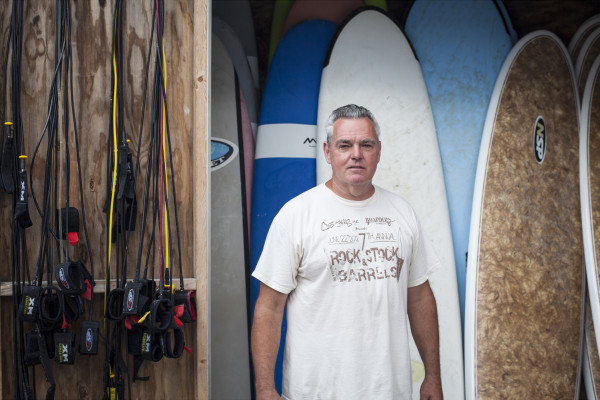In a Department of Homeland Security case study, “The Resilient Social Network,” the authors describe Occupy Sandy as a “grassroots disaster relief network,” which they define as a pre-existing “entity” “that coordinate[s] primarily through social media.” They note that when activists affiliated with Occupy Wall Street wanted to respond to the storm, they didn’t have to create a network from scratch; they had to tap into one that was already there.
In an apartment in Ridgewood, Queens, on the night the hurricane hit the New Jersey shore, Bobby Cooper and Bre Lembitz, a couple and veterans of Occupy Wall Street, were enjoying drinks with acquaintances when Lembitz saw a tweeted picture of a partially submerged car on the Lower East Side. Cooper had lived in the East Village for seven years, and had volunteered in New Orleans after Hurricane Katrina. He knew what floods can do: “destroy buildings and kill people.”
He told me, over the phone, that that the first thing he remembered saying is “We’ve got a lot of work to do.”
That work involved starting a Facebook page, while Lembitz started an account with WePay, the crowdfunding platform, as well as one on Twitter, @OccupySandy. The next day, the couple bought basic supplies at a hardware store and drove Cooper’s pickup truck towards Rockaway. With already over a thousand likes on Facebook, they heard a radio report on the fires in Breezy Point and headed there.
Speaking from Fort Collins, CO, where Lembitz was preparing to apply to graduate school, Cooper described carrying relief supplies into a community center that had lost power.
“My eyes adjusted and I saw all these people just huddled in the dark, completely silent,” he said.
Cooper then repeated, to me, what he recalled saying when he saw the picture of the submerged car: “Immediately I knew we had a lot of work to do.”
What moved him to feel responsible for their plight? He gave two answers: his nurturing, and his experience in New Orleans.
“My grandmother was a socialist and a feminist back in the thirties. My grandfather was a colonel and he was conservative, but he felt it was his duty to always help people who were weaker than he was or in a bad place,” he said. “So that’s [a] two-fold, maybe, conservative and liberal concept. You help your neighbor.”
New Orleans taught him that people’s needs don’t disappear after official promises of help.
“The government will say a bunch of stuff and call The Red Cross and FEMA, but what actually happens is different than all of the information they put out there,” he said. “I think it’s really hard to sift through that.”
He also cited the transformative effects of volunteering on the ground.
“It’s good for you to understand what’s going on,” he said. “To help your fellow citizen is actually one of the healthiest things for a person.”
On Facebook, Cooper and Lembitz posted a picture of her pulling a wheelbarrow with drinking water on a flooded street in Breezy Point. Cooper said the image showed people that Occupy-affiliated volunteers were doing meaningful work, and showed him the importance of documentation.
“Taking the time to take photos and put them online...really doesn’t feel important in that moment,” he said. “We realized that it was.”
Cooper also said that he and his fellow volunteers encouraged people to spend time in Rockaway in lieu of donating money or clothing.
“We live off our relationships and our connectedness to each other,” he said. “When that’s completely disrupted, it’s really helpful to come in and be like, ‘Look, half your neighborhood’s gone and the other half are freaking out, but I’m here. I’m a person and I can be a fill-in for now. I’m not going to be as good as the community member you’ve known your whole life, but I can do what I can.”

